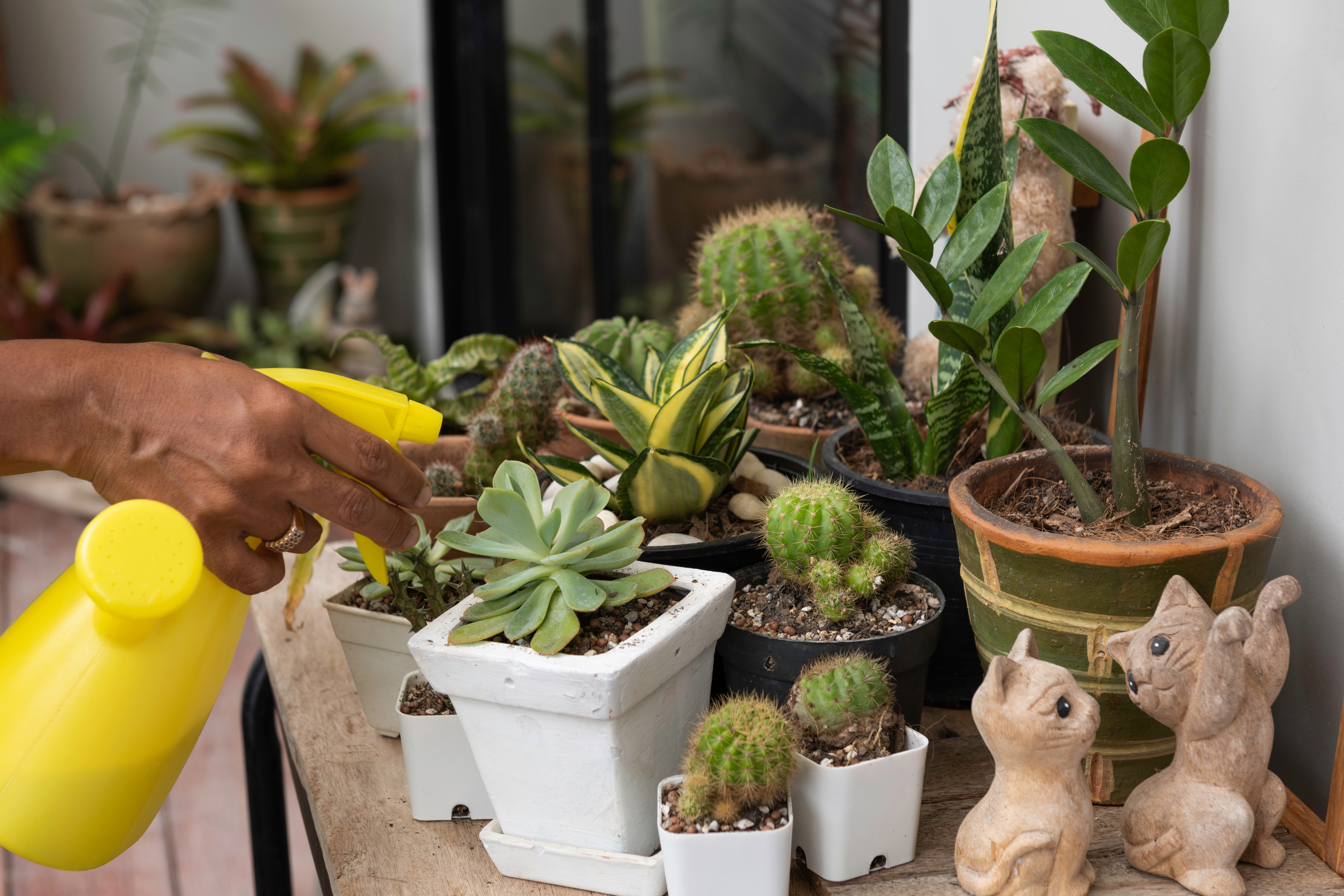Introduction:
Succulents, with their striking shapes, vibrant colours, and low-maintenance nature, have taken the gardening world by storm in recent years. From elegant rosettes to spiky agaves and trailing sedums, succulents offer endless possibilities for creating stunning garden displays that thrive in a variety of climates and conditions. In this guide, we'll explore the art of succulent gardening, from selecting the right plants and containers to designing and caring for a beautiful succulent garden that will delight the senses and capture the imagination.
The Allure of Succulent Gardens:
Succulent gardens offer numerous advantages and appeal to gardeners for several reasons:
-
Low Water Requirements: Succulents are well-known for their ability to store water in their fleshy leaves and stems, making them drought-tolerant and ideal for water-wise gardening in arid or dry climates.
-
Diverse Shapes and colours: Succulents come in a vast array of shapes, sizes, and colours, from the compact rosettes of echeverias to the architectural forms of aloes and agaves, allowing for endless creativity and expression in garden design.
-
Versatility: Succulents can be grown in a variety of containers, including pots, troughs, hanging baskets, and vertical gardens, making them suitable for gardens of all sizes, from small urban balconies to expansive landscapes.
-
Ease of Care: Succulents are generally low-maintenance plants that require minimal watering and attention once established, making them perfect for busy gardeners or those with limited time for gardening chores.
Designing Your Succulent Garden:
Follow these steps to create a stunning succulent garden:
-
Selecting Succulent Varieties:
-
Choose a diverse selection of succulent species and varieties with different shapes, colours, and textures to create visual interest and contrast in your garden. Consider factors such as sunlight exposure, water requirements, and climate compatibility when selecting plants.
-
Choosing Containers:
-
Select containers that provide good drainage and are suitable for the size and growth habits of your chosen succulents. Options include terra cotta pots, ceramic containers, hypertufa troughs, and decorative planters.
-
Arranging Your Garden:
-
Plan the layout of your succulent garden, considering factors such as sunlight exposure, soil type, and aesthetic preferences. Experiment with different arrangements and groupings to create a balanced and harmonious composition.
-
Preparing the Soil:
-
Use a well-draining soil mix specifically formulated for succulents or amend standard potting soil with perlite, pumice, or coarse sand to improve drainage and aeration. Avoid heavy or compacted soils that can lead to root rot and other issues.
-
Planting Your Succulents:
-
Plant your succulents in the prepared soil, spacing them appropriately to allow for future growth and expansion. Gently loosen the roots and backfill with soil, firming it gently around the base of each plant.
-
Adding Decorative Elements:
-
Enhance the visual appeal of your succulent garden by adding decorative elements such as rocks, pebbles, driftwood, or decorative mulch. These accents can help create a naturalistic setting and highlight the beauty of your succulent plants.
-
Watering and Maintenance:
-
Water your succulent garden sparingly, allowing the soil to dry out between waterings to prevent overwatering and root rot. Monitor your plants regularly for signs of pests, disease, or stress, and provide appropriate care and maintenance as needed.
Tips for Succulent Care:
-
Sunlight: Most succulents prefer bright, indirect sunlight, although some varieties can tolerate full sun or partial shade depending on their natural habitat and adaptation.
-
Watering: Water succulents thoroughly but infrequently, allowing the soil to dry out between waterings to prevent root rot and other moisture-related issues.
-
Temperature: Succulents thrive in warm temperatures and can tolerate fluctuations in temperature, but they may need protection from extreme heat or frost in colder climates.
-
Soil: Use a well-draining soil mix specifically formulated for succulents or amend standard potting soil with perlite, pumice, or coarse sand to improve drainage and aeration.
-
Propagation: Many succulents can be propagated from stem or leaf cuttings, allowing you to expand your collection and share plants with friends and fellow gardeners.
Conclusion:
Succulent gardening offers a world of creativity, beauty, and endless possibilities for gardeners of all levels of experience. Whether you're creating a small container garden for your patio or a sprawling landscape filled with succulent treasures, the key to success lies in understanding the unique needs and characteristics of these remarkable plants.
So, embrace the allure of succulents, and let your imagination take flight as you design and cultivate your own stunning succulent garden. With a little care, creativity, and a touch of magic, you'll soon be surrounded by a vibrant tapestry of colours, shapes, and textures that will delight the senses and inspire the soul.
Happy succulent gardening!

